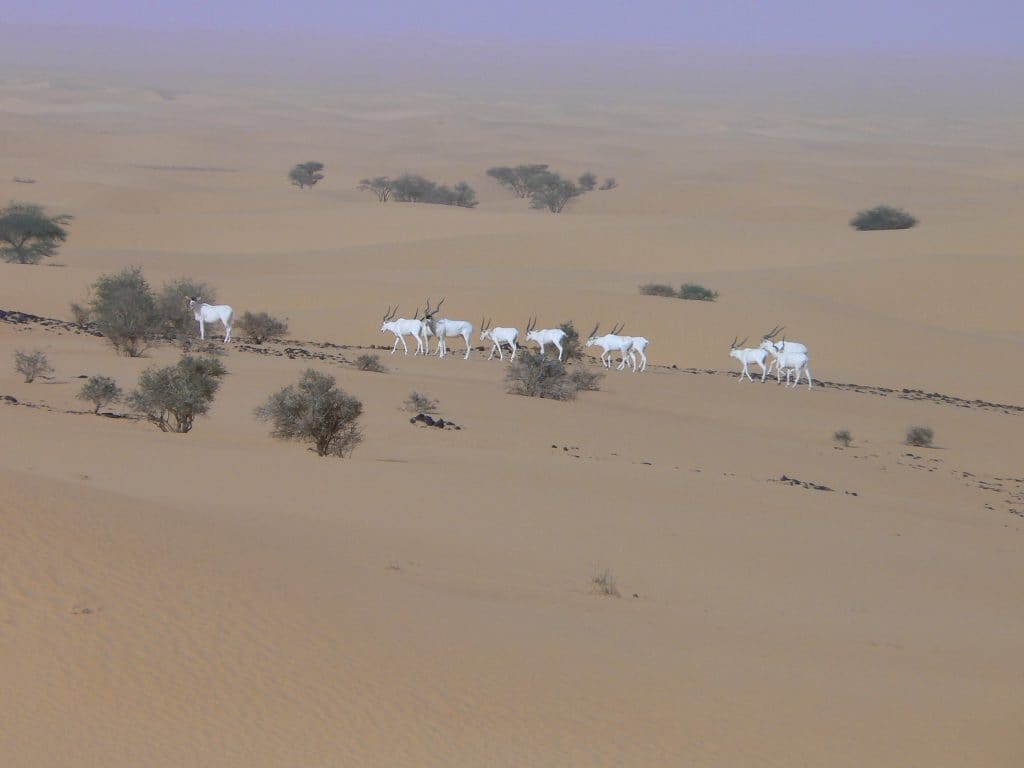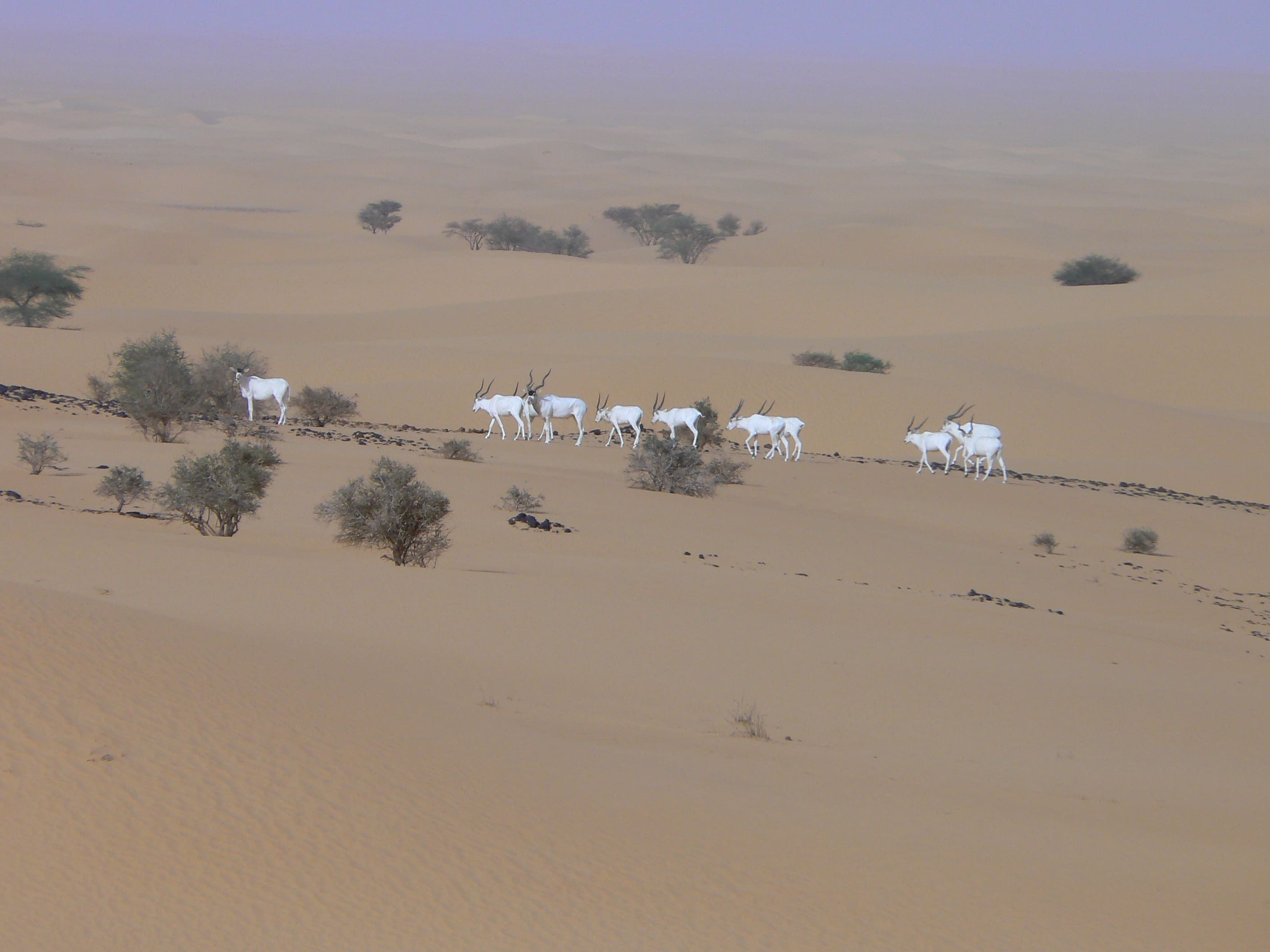In the fall of 2008, Niger began drilling for oil in the Tin Toumma desert to the east of the country. Tin Toumma is where SCF and its partners are working to set up a vast new national nature reserve. It is also home to the world’s last viable population of addax. Will the search for black gold deal the final blow to the survival of this magnificent white antelope? Or can we find a just compromise that allows Niger to benefit from its subterranean riches whilst conserving its precious living natural resources?

This new threat will require enormous effort on all sides to resolve. Not only is there a strong possibility the addax will be hunted but the peace and tranquillity they have enjoyed and require to cope in such a rigorous habitat will be shattered. Enormous trucks are already roaming noisily across the desert and an airstrip and base camps have been established deep in the desert.
The solution lies in constructive engagement between environmental and mining interests, coupled with a mutual desire to see a win-win solution developed. It is possible to have both black gold and white addax but this rosy outcome should not be taken for granted. Niger is determined to get at its oil and as one of the poorest nations on earth this is understandable. A major challenge lies not only with the disturbance caused by oil prospection and extraction but controlling the activities of the military forces put in the field to protect the oil workers. Thanks to the project’s network of community game guards we know already that gazelles have been poached and it is only a matter of time before the addax also come into range.
So, what can be done? SCF’s strategy is based on three interrelated components: dialogue, awareness and action. We must continue playing the role of moderator and catalyst to bring the various stakeholders together to look for mutually beneficial outcomes. To assist in this process we are using tools such as posters, films, lectures and workshops to raise the nation’s awareness of the unique, living wealth of natural resources that Niger’s deserts contain. A major strand of this campaign has been the showing on TV, both at home and throughout the region, of a documentary made by a local cineaste in 2007 with SCF on the ecology of Tin Toumma and the global importance of conserving its unique and rapidly dwindling wildlife. Moves are now afoot to get a fully professional documentary made.
Equally important is the need to demonstrate quite tangibly that Niger’s wildlife is worth saving and one way to do this is by having a strong presence in the field to watch and to dissuade would be miscreants from poaching. Even though the addax is protected by law, poaching will certainly occur unless vigorously controlled. Unfortunately the odds are not in our favour. The desert is vast and the means and manpower at the disposal of the wildlife service limited. But thankfully wildlife protection is not uniquely a question of force but a delicate balance between carrot and stick, where getting people onside is much more likely to have a long-lasting effect than force alone. As Theodore Roosevelt said quoting an African proverb “Speak softly and carry a big stick, and you will go far.” Frankly I doubt it. If there is one thing we have learned about conservation it is big sticks are no guarantee of success. To the contrary they don’t resolve the root causes that often lead to hunting and overuse of wildlife and tend to create enemies rather than friends. As a result we are proactively engaged in working with the military forces and local government to harness their presence in the field to assist in conservation rather than act as agents of its destruction. Slowly, progress is being made to change attitudes. As for the critically endangered addax, let’s sincerely hope when the oil is long gone, the dust and smoke settled and peace has returned they are still out there secure in their desert fastness.
John Newby, CEO Sahara Conservation Fund


